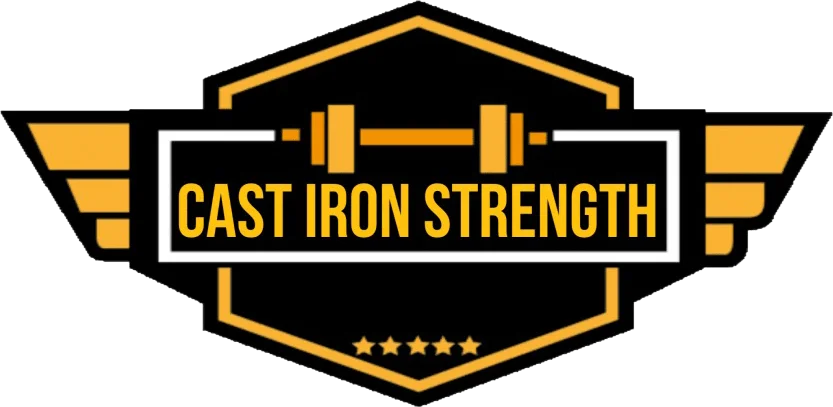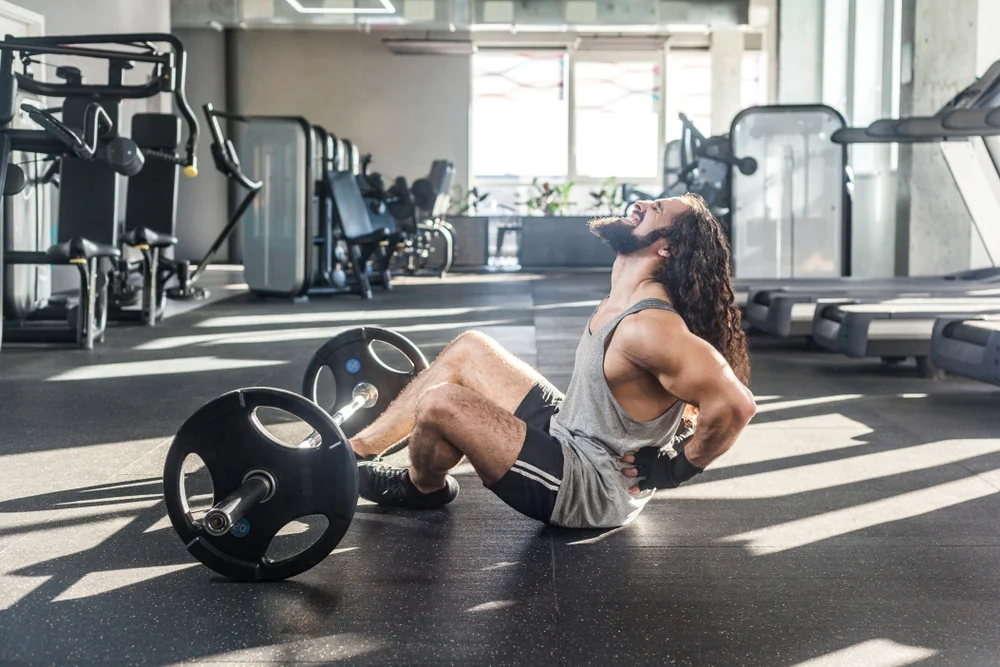The following advice is not that of a medical professional and is just the anecdotal experience of a coach and lifter. If you have an injury or issue you should seek medical advice first and foremost.
Chronic pain is a very common problem in repetitive load based sports which if you were to choose a phrase to describe powerlifting I think you would be hard-pressed to find a better one. One of the most common forms of pain is a tendinopathy specifically in the knee patella tendinopathy is very common. Before we continue we will briefly discuss what a tendinopathy is
Tendinopathy refers to a disease of a tendon. The clinical presentation includes tenderness on palpation and pain, often when exercising or with movement.[1]
Three terms have evolved in the medical terminology to refer to injuries that cause tendon pain:
- Tendinitis– acute tendon injury accompanied by inflammation
- Tendinosis– chronic tendon injury with degeneration at the cellular level and no inflammation [2]
- Paratenonitis– Inflammation of the outer layer of the tendon (paratenon) alone, whether or not the paratenon is lined by synovium
- Paratenonitis with tendinosis– Paratenonitis associated with intratendinous degeneration[3]
- Tendinopathy – chronic tendon injury with no implication about etiology[4]
Tendon injuries arise from a combination of intrinsic and extrinsic factors; acute tendon injuries may be predominantly caused by extrinsic factors, whereas in overuse syndromes as in the case of tendinopathy it may be caused by multifactorial combinations of both intrinsic and extrinsic factors. An example of an intrinsic factor for tendinopathies are: poor biomechanics such as limb malalignments and hyperpronation that may cause increased traction loads acting on the foot and ankle that may increase the incidence of Achilles, flexor hallucis longus muscle, and tibialis posterior muscle tendinopathies. – Wikipedia 2018
In powerlifting, tendinopathies develop when the lifter does not allow for sufficient rest time for the tissue to remodel and heal. Once you undergo a session or an exercise intervention you are exposing those tissues to a stress. Depending on the amount of load or stress the tissue/tendon is exposed to during the session it will require a certain amount of time before it is returned back to full health or to adapt to the loading so it is stronger and more capable of withstanding future stress or sessions.
When a lifter is undergoing training frequency, volume, intensity or volume load on a regularity or of a high enough level that they can’t recover sufficiently from session to session, from week to week and from block to block the likely hood of overuse injury developing becomes greatly increased. The best cure from tendinopathy or overuse injury is definitely prevention so make sure you are paying attention to the recovery in your program and ensure you are getting sufficient down time and are using manageable loading strategies to make sure you are going through the year as pain and injury free as possible.
I have developed a tendinopathy what do?
Once you have developed a tendinopathy such as patella tendonitis which is an incredibly common affliction in running jumping athletes (it is also known as jumper’s knee) and the most common knee flare up I have seen in lifters then you need to begin a management strategy.
As always with any issue like this, I implore you to go and see a physiotherapist or sports medicine professional before you start to embark on a rehab plan as without a professionally guided diagnosis and treatment plan you are more or less shooting in the dark. Before you start down on any rehab route having the correct diagnosis is by far the most important step as you won’t be able to create a rational plan, have the correct timelines or know the do and don’ts of the problem.
First things first get the tendon/pain to settle.
Before you can begin to address the issue around the tendon (the tendonitis) you need to get the pain to subside. We aren’t talking about being pain-free as this can take a long time depending on how annoyed or inflamed the tendon is. Realistically we are looking for you to be able to perform basic warm-up routines and activities with about 3/10 on the pain scale or below. Once the tendon has come to the point where it is not inflamed enough to allow some near pain-free movement then we can move onto the next part of the process.
To help the process of inflammation reduction you can use the following strategies to help speed up the process and reduce the detraining in your lower body
- Come up with a lower body routine that is completely pain-free, omit any exercises that cause you knee pain. You will need to do some experimentation to find a battery of exercises you can use to train around the pain.
- Rest the knee in day to day life and in the gym, try and stay away from loading that causes the knee to stiffen up or become sore. Generally being active and not taking impact through the knee (running/jumping) in day to day life and avoiding sitting for too long having the knee seize or become stiff is a good stratagem.
- Regular icing can help to manage and reduce inflammation.
- Sparing use of NSAIDs (non-steroidal anti-inflammatory drugs such as ibuprofen) can help to deal with symptoms. I personally would advise you use this when needed and try to avoid overuse or reliance on these drugs.
Once the tendon is settled
The next step is to engage in some training to help and increase the quality of the tendon quality. There is a method of training known as Heavy Slow Resistance Training that has been shown to improve the collagen content of the patella tendon and improve the tendon quality and health of athletes who underwent it who were suffering from tendinopathy.
One such study can be found here – https://journals.sagepub.com/doi/abs/10.1177/0363546509350915
To help the tendon repair and encourage an increase in the quality of the tissue it requires a high and progressive loading protocol that helps to challenge it and induces adaptation. For a patella issue, you should use exercises that
- Focus on the top ½ of movement (as parallel is where the tendon takes the most amount of load) and involve the knee joint as the prime mover.
- Allow you to load heavy loads on the bar or the tendon as these tissues are capable of handling massive forces so lunges with resistance bands aren’t going to cut it.
- You can perform safely using tempo and heavy loads this is a very stressful training protocol and it sucks to do, if you need to bail you should be safely able to do so.
Heavy Slow Resistance Training 9-week protocol.
- 2-3x per week.
- Use as heavy as weight as you can manage for every set
- The tempo is 3-0-3 (3 seconds down, 0 pause, 3 seconds up) you should use a metronome always to standardize the tempo just download an app and put it on in your headphones when training.
- 2-3 exercises I will suggest three exercises to use but you can switch them out for alternatives that you can use with your gym equipment.
- This protocol will require you to perform maintenance and will have to become part of your regular training routine it is normally a good idea to include some of it either into your warm up or as a finisher for your lower body session.
Week 1-3 initial programme
| Week | Exercises | Sessions | Sets | Reps | Intensity/Tempo |
| 1 | Box Squat, Leg Press, Hack Squat | 2-3 | 3 | 15 | As heavy as you can manage (3-0-3) |
| 2 | Box Squat, Leg Press, Hack Squat | 2-3 | 3 | 10 | As heavy as you can manage (3-0-3) |
| 3 | Box Squat, Leg Press, Hack Squat | 2-3 | 4 | 8 | As heavy as you can manage (3-0-3) |
Week 4-6 reintroduction of normal training in the warm-up can remove one of the exercises from the above cycle and include some more normal training.
| Week | Exercises | Sessions | Sets | Reps | Intensity/Tempo |
| 4 | Box Squat, Leg Press | 2-3 | 3 | 15 | As heavy as you can manage (3-0-3) |
| 5 | Box Squat, Leg Press, | 2-3 | 3 | 10 | As heavy as you can manage (3-0-3) |
| 6 | Box Squat, Leg Press, | 2-3 | 4 | 8 | As heavy as you can manage (3-0-3) |
Week 7-9 transition into normal training pattern and adding in some heavy slow training to maintain positive training adaptations from previous 6 weeks.
| Week | Exercises | Sessions | Sets | Reps | Intensity/Tempo |
| 7 | Box Squat or Leg Press | 1-2 | 3 | 15 | As heavy as you can manage (3-0-3) |
| 8 | Box Squat or Leg Press | 1-2 | 3 | 10 | As heavy as you can manage (3-0-3) |
| 9 | Box Squat or Leg Press | 1-2 | 4 | 8 | As heavy as you can manage (3-0-3) |
You may find that it takes longer or less time for your symptoms to ease up and hopefully disappear. The first few signs that you are on the mend or recovering will be body weight squats becoming pain-free. Once you have settled down the tendon and rehabbed it using a protocol such as heavy slow resistance training you will need to keep a sharp watch on your exercise selection, intensity and volume to make sure you are not flaring up the tendon again.
Some acute symptom management
- Taping the patella can help to take some direct pressure off it this will need to be carried out by a qualified physiotherapist or sports medic.
- Wearing tendon bands or compressive garments such as knee sleeves can help to keep the joint warm and reduce some of the acute pain during exercise.
- Anti-inflammatory drugs such as ibuprofen can be used to manage symptoms but it is something you do not want to do on a regular basis as it can become very dangerous if taken to extremes.
- Foam rolling the quad close to the knee can help to reduce acutely pain from some tendon issues.
- Using box squats to limit the range to a pain-free movement is a very effective management tool.
- Warming up using lots of posterior chain work (glutes, hamstring and lower back) and encouraging yourself or your lifter to sit back into it can help to take some pressure off the knee.
Hopefully, this article can act as a jumping off point and as always I would encourage you to go and see a sports medicine professional so you can get an accurate diagnosis and some help to devise an effective rehab programme.
Marc















